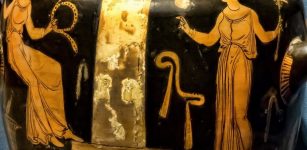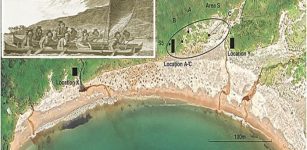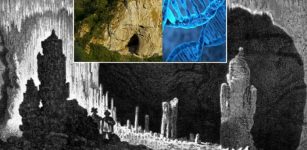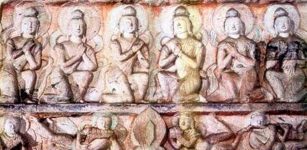Controversial Theory Suggests “Hobbits” Were Not Human
MessageToEagle.com – Who were they? Were they another species of human, like us but mysteriously different?
In the large, cathedral-like Liang Bua (“ meaning ‘cool cave’ in the local Manggarai language”) cavern on the 220-mile island of Flores, Indonesia, which sits between the mainland of Asia and Australia, researchers have discovered the remains of strange, very tiny – only three feet tall as full grown adults – human beings, namedHomo floresiensis.
The origin of the Hobbit species remains a challenging subject to scientists. The Hobbit’s discovery confirmed the view that the Earth was once populated by many species of human, but new research the Hobbit’s were not human at all!
So, who were these mysterious beings?
Were did they come from?
The idea that our species, Homo sapiens, was the only species of human on the planet was for the first time in thousands of years is in doubt.
The tiny species known as the Hobbit, named Homo floresiensis was discovered for the first time in 2013 in Indonesia. Australian archaeologists unearthed the bones while digging at a site called Liang Bua, one of numerous limestone caves on Flores.
These unknown beings were only 1m-tall (3ft) and it is believed they lived on Flores Island until at least 12,000 years ago. Then again, stone tools discovered elsewhere on Flores in 2010, suggest that potential ancestors of H. floresiensis could have been on the island a million years ago.
The fact that little people feature in the legends of modern Flores islanders suggests we might have to take tales of Leprechauns and Yeti more seriously.
Scientists considered the species to be a very primitive form of human.
The brain of a female Hobbit was about the size of a chimpanzee, yet there is evidence that she used stone tools.
Later, more fossilized remains of the Hobbit have been unearthed, let alone the discovery of creatures from folklore. But those involved in the field are convinced that much more is yet to come, according to Prof Richard Roberts who was among those to have published details of the “Hobbit”.
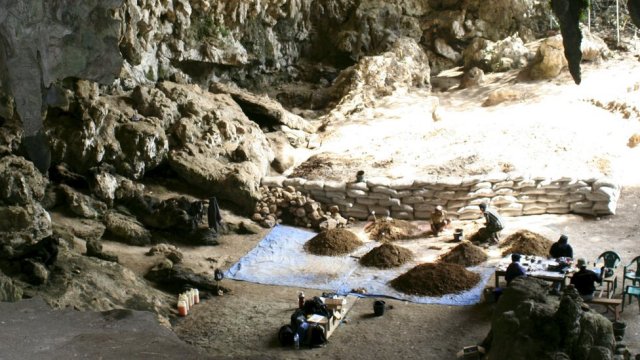
“The discovery of the Hobbit has opened up the credible possibility of other undiscovered human species being ‘out there’, perhaps buried meters underground like the Hobbit, or tucked away in a museum drawer, unrecognized for what it truly is – another new species, but misidentified as an ‘unusual’ modern human or an earlier species of human well-known to science,
I think the discovery of the Hobbit helped create an atmosphere in which it’s okay to expect the unexpected, and that we shouldn’t get fooled into thinking that we have all the answers, ever,” Prof Richard Roberts said.
Flores is east of the so-called Wallace Line which demarcates islands that have rarely – if ever – been connected via land bridges to the Asian mainland.
So did this early, very primitive species of human have the wherewithal to build boats and sail across the sea?
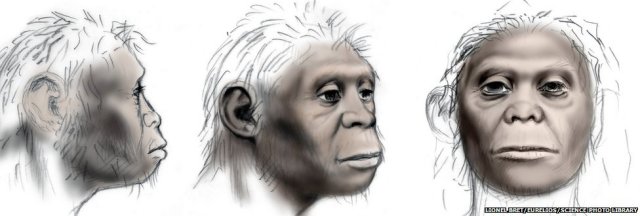
Many believe that the Hobbit stems from an earlier form of human called Homo erectus which arrived on the island around a million years ago and gradually became smaller over generations through living on an island, where there were scant food resources.
Others believe that its origins are from ape-like creatures which left Africa more than two million years ago.
“If the H. floresiensis lineage had a more primitive origin than the oldest known H. erectus fossils so far identified in Asia, then we would have to re-evaluate the dominant explanation for how humans arose and spread from Africa. Most current thinking assumes that the first dispersal from Africa was just before the time of the Dmanisi fossils. An ancient origin for the hobbit would make that dispersal earlier and more complex.
It would mean that a whole branch of the human evolutionary tree in Asia had been missing until those fateful discoveries in Liang Bua,” Chris Stringer writes in his latest article that was published in Nature.
Critics even proposed that the creatures were the remains of seriously ill modern humans.
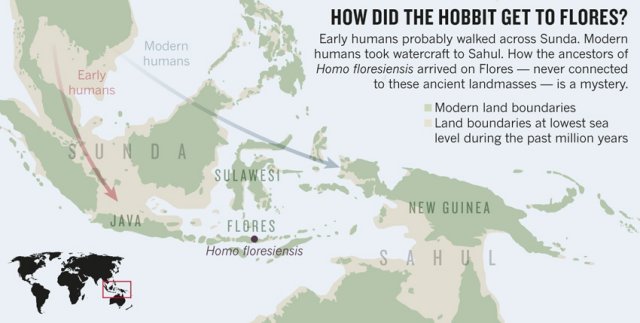
Professor Roberts told BBC News that the team never seriously thought that they would stumble across a new species of human. The researchers had been looking for the ancestors of the first Aboriginal Australians. At that time, the question of when Australia was first settled by Homo sapiens was hotly contested.
So his reaction to discovering the diminutive partial skeleton, he said, was “a mix of utter puzzlement and extreme excitement”.
The research team was convinced that the remains were clearly not those of a modern human – not even one with a medical condition.
“I was absolutely mystified. It wasn’t the early modern human skeleton we’d been hoping to find, but what was it?
“Something completely new to science as it turned out – but that’s the beauty of serendipity. And it also goes to show the value of keeping archaeology ‘real’ and carrying out excavations, rather than relying on gee-whizz technology and computer modeling to provide all the answers.
“If we’d not done any digging, the world would be none the wiser that this creature had ever inhabited this part of the planet.”
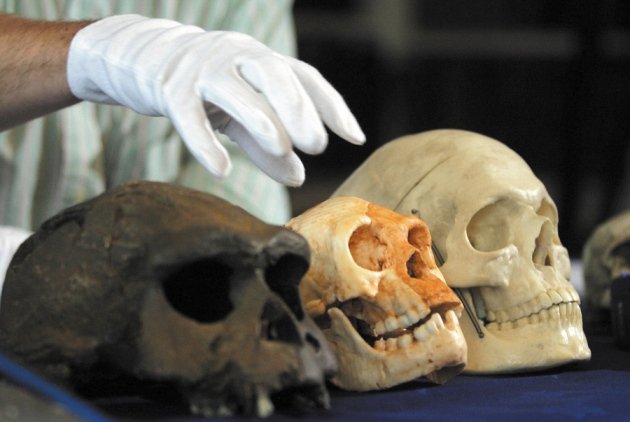
“There is the possibility that the experiment that produced the Hobbit could have produced similar experiments on other islands in the region, in Sulawesi, the Philippines and Timor and are awaiting discovery.
The scientific priority now for the group is to build up a picture of how the species was distributed, when it first arrived on Flores and when and why it finally went extinct.
“There’s still much for us to learn about the Hobbit”, explains Prof Roberts. “How its eccentric anatomical features came to be so, and whether Hobbits ever encountered early modern humans dispersing across Asia and south to Australia. Which is why, 10 years down the Hobbit track, it still feels like the journey of discovery has only just begun”.
The Hobbit’s existence on Flores is still a complete mystery. How did it get there?
© MessageToEagle.com



